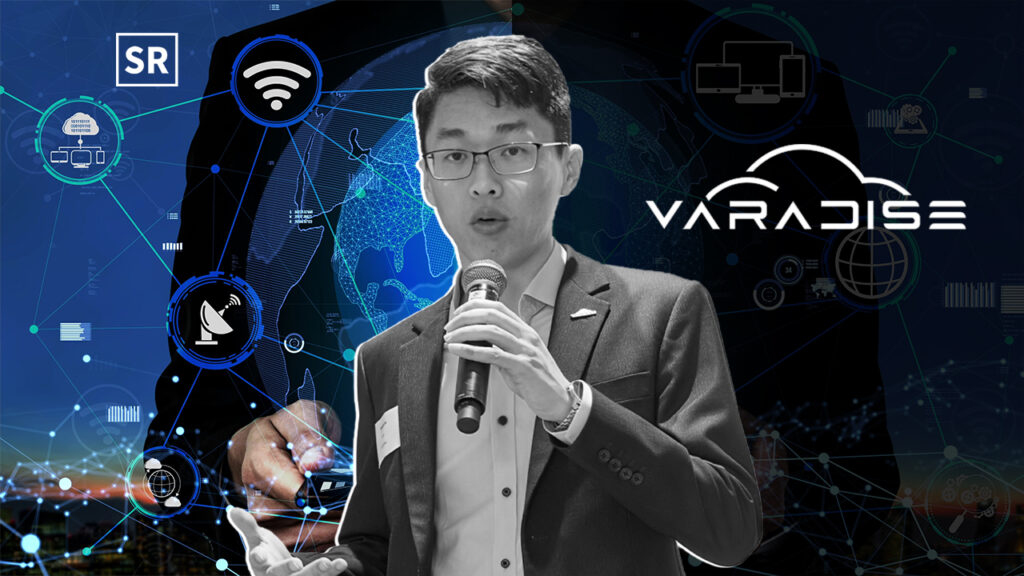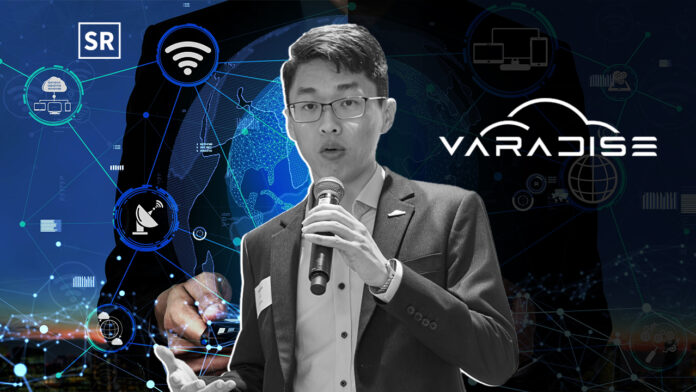
The Origins: A Civil Engineer with Vision
Terence Lui’s path to becoming the founder of Varadise Limited started in Hong Kong, where he trained and practiced as a civil engineer. Early in his career, Terence was surprised to learn how much construction work was still performed in manual, paper-based workflows and isolated systems. Even when technology existed, adoption was weak, workflows were fragmented, and data usually arrived too late to inform real decisions.
While at Gammon Construction, Terence led the Digital Transformation Department. At just 27, he was given the responsibility to reimagine parts of the construction process—introducing technologies like BIM (Building Information Modeling), AI, IoT, and GIS to monitor projects more precisely and streamline operations.
But Terence saw that in many cases, the technologies weren’t fully integrated: sensors, IO, data collection, safety monitoring, or project tracking were each handled by different tools, with no standard data format or central platform. He believed that smart cities, innovative construction, and smarter facility management needed a unified, digital twin-enabled platform from day zero. That belief planted the seed for Varadise.
The First Leap: Founding Varadise
In 2019, Terence officially founded Varadise Limited, with the mission to build one-stop solutions for construction, facility, and city data management. The idea was to bridge engineering, AI, and digital twin technology into platforms that could serve real infrastructure, construction, and urban management clients—and not just in pilots but in high-impact, working environments.
From the beginning, Terence emphasized being both technical and practical. He taught himself programming and AI early and built up experience across design, project management, business transformation, policy, IoT, BIM, GIS, and digital twin architectures. That mix of domains helped Varadise avoid being purely theoretical; it was built on what was already broken in the field.
Read Also: Brewing Innovation: The Story of Prefer’s Founders
Building the Platform: What Varadise Does
Varadise’s platform is built around digital twin technologies, everyday data environments (CDE), IoT, and real-time analytics:
Centralizing project data (BIM, GIS, etc.) to enable stakeholders to collaborate with consistent information.
Real-time monitoring via IoT sensors & AI-enabled safety tools (smart helmet, CCTV, environmental monitoring) to catch issues early and improve safety & quality.
Smart Site Safety platforms and work supervision systems that let project managers see what’s happening, where, and when—and respond faster.
Facility management and smart city data, integrating construction lifecycle from initial design through ongoing operations. Varadise aims not just to build projects, but to help manage them long-term.
Early Milestones & Recognition
Varadise didn’t stay under the radar:
In 2021, they won the Gold Award in the Startup Category at the CIC Construction Digitalisation Award in Hong Kong.
Also, that year, they acquired the Most Innovative Award in the Startup Stream at the New World Innovation Challenge.
In 2023, Varadise was recognized as a Technology Pioneer by the World Economic Forum.
These recognitions validated that Terence’s idea—that construction and urban development needed more digital structure—was not just a niche concern. Stakeholders from government, public works, and private contractors saw the value. Varadise began working with government departments under Hong Kong’s “Construction 2.0” initiative.
Leading with Culture: Terence’s Philosophy
Terence Lui stands out not only for technical vision but for leadership style:
He frequently points out that Varadise is “engineers solving problems with technology – not simply an IT company selling software licenses.” It’s all about real problems, like safety, data fragmentation, and inefficient workflows.
Standardization is central: structured workflows, data formats, reporting, safety inspections, etc. This is important in construction, where many actors and subcontractors are involved.
He believes in early adoption of digital twin and AI, but wants adoption to be incremental: first measure, then automate, then optimize. Not pushing tech for its own sake.
Challenges & Turning Points
Launching a startup in a conservative, regulation-heavy industry like construction comes with challenges:
Convincing contractors, regulatory bodies, and clients to trust digital twin and AI-enabled monitoring. Some view them as risky, costly, or untested. Varadise had to show real KPIs: safety improvements, time savings, and cost avoidance.
Data integration and standardization: many projects have many formats, legacy systems, and siloed data. Varadise needed to define everyday data environments and unify multiple tools.
Scaling across geography and scale: moving from small or pilot projects to multi-contract, significant urban developments (e.g., Kwu Tung North New Town Development). Varadise has begun taking on large projects.
A turning moment was when government/works departments adopted their platforms for real projects, such as the New Territories development, and when Varadise Twin was used in public-private collaborations showing measurable improvements in safety, quality, and tracking.
Growth & Impact
Since its founding in 2019, Varadise has grown in scope and influence:
Varadise has established a strong footprint in Hong Kong, with projects accepted by central public works departments, facility management, city planning, etc.
The company has expanded to Guangzhou and Singapore as part of its regional strategy.
It has also worked on large public infrastructure contracts (for example, the Kwu Tung North New Town Development, desalination plant projects, etc.) to apply its tools across scale.
On the people & industry side: Terence himself became a Fellow of the Institution of Civil Engineers (ICE) at the age of 32—making him among the youngest to achieve that, reinforcing the credibility of his leadership.
The Road Ahead: Vision for Tomorrow
Paradise under Terence’s guidance has clear ambitions:
Deepening the use of digital twin technology across more construction phases and city infrastructure: not just during building, but also operation, maintenance, and urban planning.
Pushing for higher safety, productivity, and sustainability standards—especially via tools like their Smart Site Safety System (4S), real-time monitoring, and data dashboards.
Advocating for better policy, data standards, and regulation so that digital transformation in construction becomes easier, not harder. Terence sits on industry committees, helping shape data standardization and policy in the Greater Bay Area and Hong Kong.





